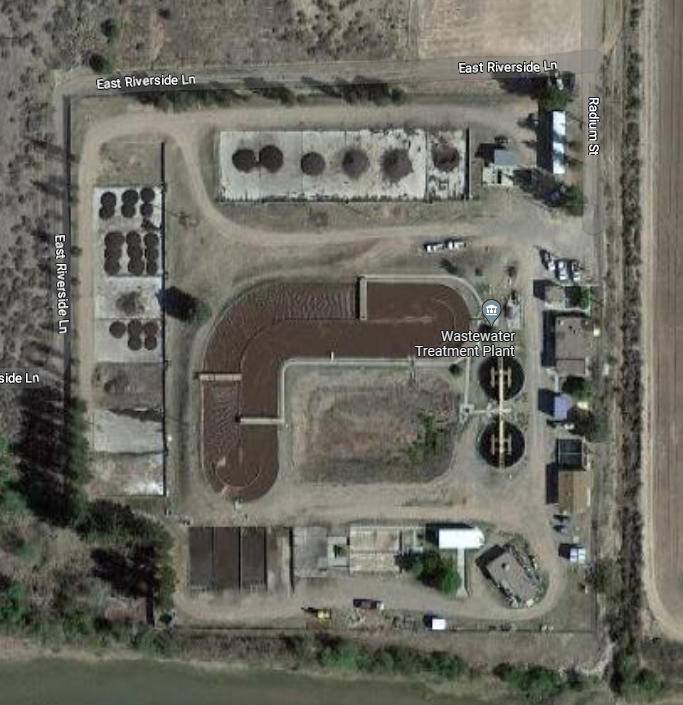As usual, the Truth or Consequences City Commission whizzed through the once-a-year Infrastructure Capital Improvements Plan process, rubber-stamping it without substantive discussion at the July 10 meeting.
As I have written in the past, this is quite distressing:
Updating the ICIP is the only time each year the city commissioners make a minor effort to plan in public, which is the only place they are supposed to be planning.
Many millions of dollars are spent and the city’s future is largely determined by the ICIP process, yet it is mostly done behind closed doors, with the city commission’s relieved assent.
Mayor Rolf Hechler was the most articulate among them. “Last year was all about water and this year it’s wastewater,” he said.
He also said he wanted some attention paid to the electric facility, “because we don’t want to make the same mistakes we made with the water and wastewater systems.” As if the electric system hasn’t also been sorely neglected for generations.
Looking over department head’s capital-projects requests (which can be found in the 6-26-24 city commission packet on the city’s website), Hechler asked Assistant City Manager Traci Alvarez, who oversees capital projects, to “consolidate them.”
Those three vague directives from Hechler appear to have guided the behind-scenes ranking of the top five projects approved by the city commission.
Although City Commissioner Amanda Forrister repeatedly claimed that ranking “doesn’t matter,” it does.
The top five comprise the “elevator speech.” They will be the focus of city staff and city commissioners. Those projects will be (hopefully) flogged by our representatives in congress, Sen. Crystal Brantley, Representative Gail Armstrong and Representative Tara Jaramillo. The city lobbyist, Kathy Elliot of Clinton D. Harden & Associates, will be paid tens of thousands of dollars to talk up these projects with appropriate senate and representative committee members and state agencies in an effort to get them funded by grants and grant/loan combinations.
The top five are:
- Wastewater treatment plant upgrades–$10 million
Water and Wastewater Department Director Arnie Castaneda describes the project as:
- “Replace activated sludge section of the treatment plant with newer technology”
- Extend aeration plant
- Replace all return-activated-sludge pumps “with new set up.”
- Replace grit separator “with new set up.”
- Install wash-water booster pumps to wash down treatment plant and equipment
- Remove and demolish old clarifiers since they are a hazard, as well as the old drying beds and pumps
- Upgrade lift station at the plant and upsize pumps and control panel
- Install a new building at the Parshall flume
- Put in a new ultrasonic flow meter at the Parshall flume as well as a sampler for testing and flow meters at the reuse pond
- Install and refurbish reuse water lift station, including new pumps and new control panel
- Add preliminary engineering report cost
I remembered many millions had been spent on upgrading the wastewater treatment plant in recent years and I did a documents request to firm up my memory.
The documents showed the city spent nearly $11 million between 2016 and 2020 to upgrade the wastewater treatment plant.
I have studied the work that was supposedly done, and it appears there is overlap with what Castaneda is proposing.
Smith Engineering’s 2014 engineering report suggested four phases, 1, 2A, 2B and 3, that would cost $10 million total. It appears that phase 1 was done, then the city skipped phase 2A and did phase 2B, but modified it. Those two phases cost $11 million, many millions more than estimated.
Smith Engineering, 10 years ago now, gave the city a 20-year road map and four-phase approach to upgrading the sewer plant.
The report said the city plant was operating at 70 percent of its capacity and that up to 210,000 gallons a day of unmetered water -flow was going through the plant, taxing the system and costing the people. Much of the unmetered water-flow came from bath houses and residences with hot springs wells, the report said, as documented by the New Mexico Environment Department in 2012. Another source of infiltration was from cracked pipes, “especially along the Rio Grande.”
The engineering report also warned that the city had to get its nitrogen and phosphate loads down to meet upcoming EPA effluent requirements or face potentially massive fines for dumping them into the Rio Grande. Removing these “nutrients” seems to be Castaneda’s objective in the $10 million upgrade. Wasn’t this already done in phase 1 and 2B under Smith Engineering’s plan?
If the city commission cared about keeping costs down, it might want to review the Smith 2014 plan and its alternatives and cost estimates. The city commission might also seek an explanation why the first two phases cost about $4 million more than estimated. The city commission might also ask for a thorough presentation on if and why Castaneda wants to do something different to the activated sludge section than what was planned in 2014 or already done according to that plan.
- Clancy lift station force main, $1.6 million
Castaneda describes this as replacing 1,000 feet of sewer line.
- Vacuum system replacement, $5 million
In 2019 the city commission received nearly $500,000 in grant/ loan money to repair the sewer vacuum system along Riverside Drive, which has been backing up sewage into people’s yards or homes for at least five years now.
It’s not until Castaneda was hired in January 2023 that the city commission was told, by him, that the vacuum system was meant for operations such as boat yards to pump out yacht holds. It was never meant to serve as a city sewer system and the company was no longer selling that system. Parts that the city has to buy to keep it working can only be purchased from the company, and they are charging an arm and a leg, Castaneda said.
Wisely, the city has decided to use the 2019 grant/loan to do the minimum repairs until it is replaced with a traditional lift-station system.
- Water system and fire hydrant replacement, $7.225 million.
This is not on Castaneda’s request document and it was not discussed or described by the city commission or Alvarez.
- Substation primary underground feeder replacement, $1 million.
Electric Department Director Bo Easley had this project on his list, but with no description or explanation.
The city commission, as usual, asked nothing and communicated nothing for the benefit of their constituents what this is and why it is needed and why it’s a priority.
Since we had to replace one of the two 60-year old transformers to keep the grid from going down two years ago, I would think that replacing the other transformer would be a priority. Again, necessary background was not given to city commissioners, although two of them, Hechler and Forrister, where there when the grid almost went down and signed off on massive emergency purchases to fix it temporarily and then replace it.
Without engineering reports, evidence, fact finding and regular reporting by department directors, the city commission’s ICIP process is trite and exceedingly expensive.
As I have said before, it would cost less in wasted millions for the city to hire all three or a combination project coordinator /city planner/city engineer than to do without those functionaries.

